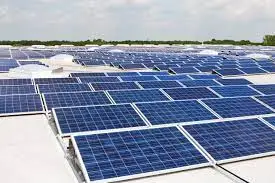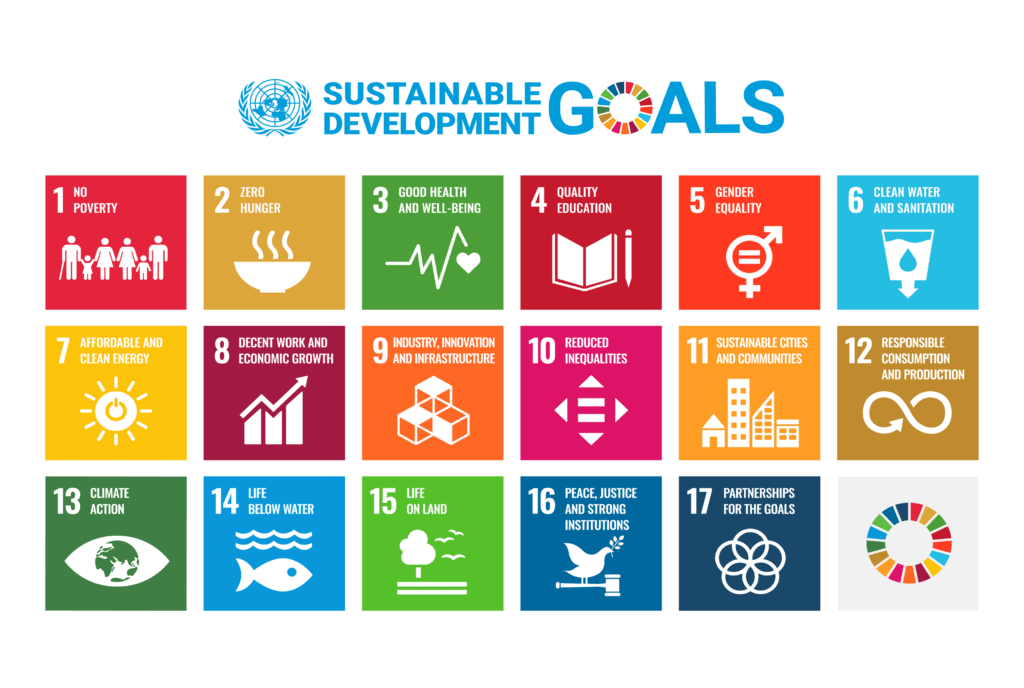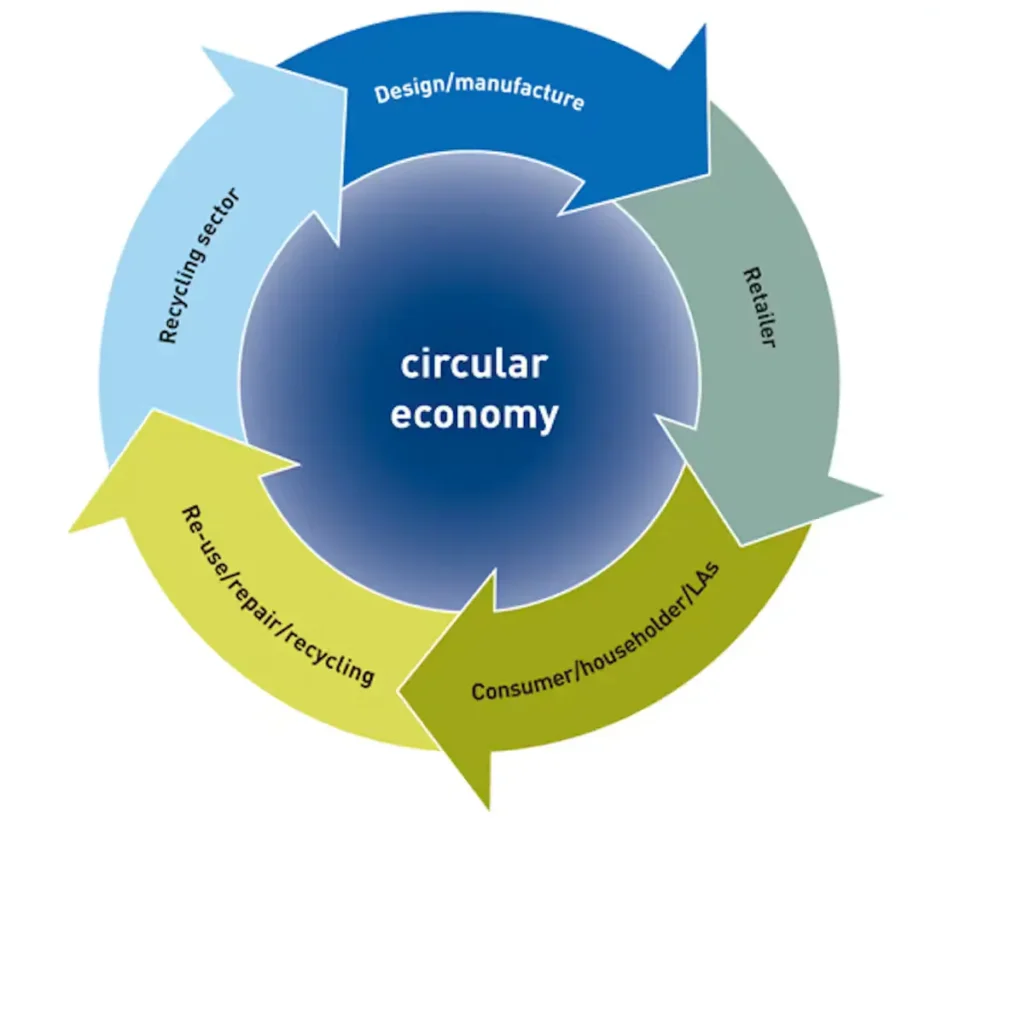
The Future Of Sustainability: Predictions For The Next Decade
By Steven Green | June 15, 2023
As we move into the next decade, sustainability has become an increasingly important topic for individuals, communities, and governments around the world.
From climate change to resource depletion, there are a multitude of challenges that we face as a society. However, with these challenges come opportunities for innovation and progress towards creating a more sustainable future.
At present, we find ourselves at a critical juncture in our journey towards sustainability. The decisions that we make today will have significant implications for future generations.
As such, it is essential that we take a data-driven and forward-thinking approach to understanding the current state of sustainability and predicting what the next ten years may bring.
In this article, we will explore some of the key trends and predictions for sustainability in the coming decade while highlighting examples of countries, cities or companies who are leading the way in sustainable development.
Key Takeaways
- Sustainability is crucial for the well-being of future generations, and a data-driven and forward-thinking approach is essential to understand current state and predict future trends.
- The UN has identified 17 Sustainable Development Goals (SDGs) as a blueprint for achieving a better and sustainable future for all, but challenges remain in implementing them at the local level and ensuring global impact.
- Marginalized communities often bear the brunt of pollution and negative impacts on the environment, and circular economy approaches, renewable energy sources, and green finance are some of the solutions to address these challenges.
- Technology such as AI, IoT (Internet of Things), and blockchain are being utilized to create more efficient and effective solutions for environmental challenges, and collective action from individuals, communities, and governments is required for a sustainable future.
- Key Takeaways
- Introduction
- The Current State of Sustainability
- Understanding the Importance of Sustainable Development Goals (SDGs)
- Future Predictions and Trends
- Renewable Energy: Predictions for advancements and adoption rates of various renewable energy sources
- Sustainable Agriculture: The future of organic farming, plant-based diets, and food security
- Circular Economy: How recycling and waste management practices are expected to change
- Sustainable Construction: The role of green buildings and smart cities in the future
- Climate Change Mitigation: Anticipated developments in carbon sequestration, emission reduction techniques, and climate policies
- Technology and Innovation: The role of technology in accelerating sustainability, including AI, IoT, blockchain, etc
- countries, cities or companies that are leading the way in sustainability
- The Role of Individuals, Communities, and Governments
- Conclusion
- Frequently Asked Questions
- What specific actions can individuals take to contribute to sustainability in their daily lives?
- How can businesses be held accountable for their sustainability efforts?
- What challenges do developing countries face in implementing sustainable practices?
- What role do technological advancements play in promoting sustainability?
- How can governments incentivize sustainable practices among industries and individuals?
- Conclusion
Introduction
You’re about to embark on a journey exploring the future of sustainability, where we’ll take a peek into what lies ahead for our planet in the next decade – it’s like looking through a crystal ball!
As we examine future prospects, it is clear that sustainability challenges will continue to be at the forefront of global concerns. Climate change, resource depletion, and loss of biodiversity are just some of the critical issues that threaten not only our environment but also economic and social development.
The policy implications for tackling these challenges are significant. Governments worldwide need to adopt more ambitious policies and regulations to create an enabling environment for sustainable practices. At the same time, innovation trends such as circular economy approaches, renewable energy sources, and green finance offer promising solutions for achieving sustainable development goals.
The private sector also has a crucial role to play by embracing sustainability as a core business strategy. Global collaboration will be vital in driving progress towards sustainable development goals over the next decade.
Countries must work together to share knowledge and best practices while promoting technology transfer between developed and developing nations. Multilateral cooperation can help build consensus on international standards, establish common metrics for measuring progress, and mobilize financial resources towards sustainable projects.
As we move forward into this exciting new era of sustainability, it’s essential that we reflect on the current state of sustainability efforts globally. Let’s explore how far we’ve come and what more needs to be done to secure a brighter future for ourselves and generations to come.
The Current State of Sustainability
As we look at the current state of sustainability, it’s clear that we’ve come a long way in the last decade. We’ve seen some significant achievements in areas such as renewable energy, waste reduction, and sustainable agriculture.
However, there are also many challenges and areas of concern that still need to be addressed if we hope to create a more sustainable future for ourselves and future generations.


Where we stand on sustainability today
Nowadays, it’s crucial to acknowledge the current state of sustainability and how it affects our planet. As a global community, we’ve made significant progress in recent years towards achieving sustainable development goals.
Here are some key observations on where we stand on sustainability today:
- Current initiatives: There’s been a surge in sustainable initiatives across various industries worldwide. From renewable energy projects to green building practices, companies are investing resources into creating more environmentally-friendly strategies.
- Sustainability progress: There’ve been notable improvements in reducing greenhouse gas emissions and waste management practices globally, indicating that we’re making strides towards becoming more sustainable.
- Environmental impact: Despite these efforts, the environmental impact of human activities continues to be a cause for concern, with climate change being one of the most pressing issues.
Reflecting on our current state of sustainability helps us understand what needs to be done going forward to achieve greater success. One way to gain insight is by looking at some key sustainability achievements in the last decade without losing sight of future developments that need to happen for continued growth and improvement towards a more sustainable world.
Some key sustainability achievements in the last decade
Let’s take a look at some impressive sustainability achievements from the past decade. In terms of progress indicators, we’ve seen significant improvements in global carbon emissions.
According to data from the International Energy Agency, carbon dioxide emissions per unit of energy produced decreased by 2.8% in 2019, marking the largest decline in the last 30 years. This is due to a combination of factors, including increased renewable energy use and improved energy efficiency.
Corporate responsibility has also played a major role in sustainability achievements over the past decade. Many companies have implemented environmentally-friendly policies and initiatives, such as reducing waste and packaging, using sustainable materials, and investing in renewable energy sources.
These efforts have not only had a positive impact on the planet but have also demonstrated that businesses can be profitable while prioritizing sustainability. However, despite these successes, there are still current challenges and areas of concern that need to be addressed for continued progress towards a sustainable future.
Current challenges and areas of concern
You’re not still living in the Stone Age, so it’s time to acknowledge that climate change is a real and pressing problem that requires immediate action. The world is currently facing numerous challenges, including climate refugees, sustainable fashion, environmental justice, biodiversity loss, and greenwashing concerns.
Climate refugees are individuals who are forced to leave their homes due to environmental factors such as rising sea levels and natural disasters. This issue is becoming increasingly prevalent as the effects of climate change continue to worsen.
Sustainable fashion has also become a hot topic in recent years as more consumers demand environmentally-friendly clothing options. However, there is still much work to be done in this area as many brands engage in greenwashing practices rather than truly prioritizing sustainability.
Furthermore, environmental justice issues must be addressed as marginalized communities often bear the brunt of pollution and other negative impacts on the environment.

Biodiversity loss is another concerning issue that threatens our planet’s ecosystems and food security. It’s important for individuals and companies alike to take action towards mitigating these challenges before they become irreversible.
Understanding the importance of sustainable development goals (SDGs) can guide us towards a better future for ourselves and future generations without sacrificing economic growth or social progress.
Understanding the Importance of Sustainable Development Goals (SDGs)
As we delve deeper into the future of sustainability, it’s important to understand the significance of Sustainable Development Goals (SDGs).
The United Nations has identified 17 SDGs that serve as a blueprint for achieving a better and more sustainable future for all. These goals cover a range of issues from eliminating poverty and hunger to promoting gender equality and combating climate change.
By understanding these goals and their relevance to the future, we can work towards creating a more sustainable world for generations to come.

An overview of the UN’s Sustainable Development Goals
Take a moment to consider the UN’s Sustainable Development Goals (SDGs), which outline a comprehensive plan for global sustainability in areas such as poverty reduction, environmental protection, and economic growth.
Since their adoption in 2015, there has been significant progress towards achieving the SDGs. For example, extreme poverty has declined globally from 10% in 2015 to an estimated 8.6% in 2021, and renewable energy capacity has increased by over 30%.
However, despite these gains, many challenges remain in implementing the SDGs at a local level and ensuring their global impact. One of the biggest implementation challenges is stakeholder engagement. The success of the SDGs relies on collaboration between governments, civil society organizations, businesses, and individuals working together towards shared goals.
Measuring progress towards achieving the SDGs involves tracking a complex web of interrelated indicators and targets across multiple sectors and geographies. Looking forward to the next decade, it is clear that sustained effort will be required to overcome these challenges and achieve meaningful progress towards sustainable development.
Their relevance to the future of sustainability
Imagine a world where every person on the planet has access to clean water and sanitation facilities, healthcare services, and quality education – this is the ambitious vision of the UN’s Sustainable Development Goals.
In order to achieve these goals, it’s essential that we take into account the relevance of sustainable fashion, green transportation, eco-friendly packaging, sustainable tourism, and renewable materials.


- Sustainable fashion aims to reduce waste by using recycled materials or natural fibers such as organic cotton or hemp. The fashion industry is one of the largest polluting industries in the world, producing 10% of global carbon emissions and using vast amounts of water. Consumers can also make an impact by choosing to buy from ethical brands that prioritize sustainability in their production process.
- Green transportation options such as electric cars, bikes, scooters and public transport can help reduce our carbon footprint and promote sustainable living. Transportation accounts for around 23% of global greenhouse gas emissions.
- Eco-friendly packaging made from biodegradable or compostable materials can help reduce waste and protect our environment. Single-use plastic is one of the biggest environmental problems facing our planet today.
- The tourism industry contributes significantly to local economies but can have negative impacts on local communities and ecosystems if not managed sustainably. As travelers become more aware of their impact on destinations they visit, there will be an increasing demand for sustainable tourism practices that ensure environmental protection while supporting local people.
As we move towards a more sustainable future, it’s important that we take action now towards achieving these goals.
By promoting sustainable fashion choices, embracing green transportation options like electric cars or public transport systems, reducing single-use plastics by adopting eco-friendly packaging systems, ensuring environmentally friendly tourism practices are promoted globally, and using renewable materials wherever possible while minimizing wastage at all stages along with production chains – all of which will help ensure a sustainable future.
Let’s take a closer look at the future predictions and trends in sustainability that we can expect to see over the next decade.
Future Predictions and Trends
As we look to the future of sustainability, there are several key areas where we can anticipate significant advancements and changes. In terms of renewable energy, we expect to see continued growth in adoption rates as technology improves and costs decrease for sources like wind, solar, and geothermal.
Sustainable agriculture will likely become increasingly important as demand for organic foods and plant-based diets grows, while concerns around food security continue to mount. Furthermore, circular economy practices are expected to gain traction as recycling and waste management systems evolve towards closed-loop models.
As we move forward, it’ll be critical to prioritize sustainable construction methods and invest in innovative solutions for climate change mitigation such as carbon sequestration techniques and emission reduction policies.
Renewable Energy: Predictions for advancements and adoption rates of various renewable energy sources
You’ll be excited to know that renewable energy sources like solar and wind power are expected to see major advancements and increased adoption rates in the next decade. Here are some predictions for each:
- Solar power: It’s believed that by 2030, solar energy will be the cheapest form of electricity in many parts of the world. This is due to technological advancements, such as better efficiency in converting sunlight into electricity and lower production costs. In addition, more businesses and households are expected to install rooftop solar panels, further increasing adoption rates.
- Wind energy: The International Energy Agency predicts that offshore wind capacity will increase 15-fold by 2040. This is due to improvements in technology, such as larger turbines and better blade designs, which make it possible to harness more energy from the winds at sea. Onshore wind installations are also expected to continue growing.
- Geothermal energy: Although not as well-known as solar or wind power, geothermal energy has great potential for providing clean and reliable electricity. According to a report by the U.S. Department of Energy, geothermal could provide up to 10% of America’s electricity needs by 2050. Advancements in drilling technology are making it easier and cheaper to access geothermal reservoirs deep beneath the earth’s surface.
As we move towards a sustainable future powered by renewable energy sources, it’s important not to forget about other important areas such as sustainable agriculture. Organic farming practices and plant-based diets have been gaining popularity over recent years with food security becoming an increasingly pressing issue worldwide.
Sustainable Agriculture: The future of organic farming, plant-based diets, and food security
Organic farming and plant-based diets are becoming more popular as people become conscious of their health and the environment. The demand for organic food is increasing, leading to more organic certification programs worldwide. The global organic food market is expected to grow at a CAGR of 16.15% from 2020-2027, according to a study by ResearchAndMarkets.com.

Regenerative agriculture is gaining traction as farmers seek more sustainable methods that improve soil health and biodiversity. Urban farming is on the rise as city dwellers aim to reduce their carbon footprint. Efforts to reduce food waste are also being made through innovative solutions such as upcycling food scraps and using technology to track inventory levels.
Looking towards the future, sustainable agriculture will play a crucial role in ensuring food security for generations to come. It also plays an integral part in reducing waste throughout the entire supply chain, creating a circular system that benefits our health and helps us move towards a more sustainable world.
Circular Economy: How recycling and waste management practices are expected to change
Imagine a world where waste isn’t seen as garbage, but as a valuable resource that can be transformed into new products and materials through innovative recycling and waste management practices. This is the concept of circular design. It aims to reduce waste by creating closed-loop systems that keep materials in use for as long as possible.
Recycling innovations, such as chemical recycling, mechanical recycling, and upcycling, have been developed to make this vision a reality. To achieve sustainable consumption patterns and resource recovery techniques, waste reduction strategies must be put in place. This means reducing the amount of waste generated in the first place through better product design and packaging. It also means improving separation and sorting methods to ensure that materials are properly recycled or recovered.

Circular economy models are already being implemented by forward-thinking companies around the world, proving that it’s possible to create economic value while minimizing environmental impact. As we move towards a more sustainable future, it’s clear that recycling and waste management practices will play an increasingly important role in creating a circular economy that benefits both people and planet.
It’s important to recognize how these concepts tie into circular design principles as we look towards sustainable construction. By designing buildings with circularity in mind – using renewable energy sources, optimizing water usage, incorporating green infrastructure – we can minimize their environmental footprint while also improving quality of life for those who live or work within them.
Smart city technologies can also help optimize resource use across entire urban areas by providing real-time data on energy consumption or traffic patterns. Ultimately, the key to creating a sustainable future lies in adopting holistic approaches that connect different aspects of our society – from food systems to transportation networks – under common sustainability goals.
Sustainable Construction: The role of green buildings and smart cities in the future
If you’re interested in reducing your carbon footprint, did you know that green buildings can make a significant difference? Green infrastructure and sustainable design are the future of construction, with eco-friendly materials and energy-efficient buildings leading the way.
Smart cities are incorporating sustainability into their urban planning to address climate change and improve quality of life for residents. The benefits of green buildings go beyond just reducing energy consumption and water usage. They also offer improved indoor air quality, natural lighting, and better temperature control.
Additionally, using sustainable materials reduces waste during construction, which is better for both the environment and the bottom line. As more cities adopt smart technologies and prioritize sustainability in their planning, we can expect these practices to become even more widespread in the coming years.
As we look towards mitigating climate change through various techniques like carbon sequestration and emission reduction policies, it’s clear that green infrastructure will play a key role in achieving our goals.
Climate Change Mitigation: Anticipated developments in carbon sequestration, emission reduction techniques, and climate policies
As technology advances, we can expect to see more efficient carbon sequestration methods and innovative emission reduction techniques being implemented on a larger scale.
Carbon capture technologies are expected to become more widespread in the coming years, with direct air capture systems becoming increasingly popular. These systems work by capturing CO2 directly from ambient air and then storing it underground or reusing it as a feedstock for other products.
In addition to carbon capture, there will also be a continued focus on emission reduction techniques such as sustainable transportation and reforestation techniques. Sustainable transportation options such as electric vehicles, public transit, and active modes of transportation like biking and walking will continue to grow in popularity.
Meanwhile, reforestation efforts will aim to increase the amount of forested land worldwide which helps absorb carbon from the atmosphere. Climate policies will also play an important role in driving these changes forward by incentivizing companies to reduce their emissions and invest in sustainability initiatives.
With all these developments taking place, it’s clear that technology will play an important role in accelerating sustainability efforts over the next decade.
The upcoming section about ‘technology and innovation’ will explore this topic further by discussing how AI, IoT, blockchain, and other emerging technologies are set to revolutionize the way we approach sustainability challenges.
Technology and Innovation: The role of technology in accelerating sustainability, including AI, IoT, blockchain, etc
Technology is already revolutionizing sustainability efforts, with AI, IoT, and blockchain being utilized to create more efficient and effective solutions for environmental challenges. Here are four ways technology is making a difference:
- AI and sustainability: Artificial intelligence can be used to monitor and analyze large amounts of data from sensors, satellites, and other sources to identify patterns that would otherwise go unnoticed. This can help optimize energy usage in buildings, predict weather patterns for better crop management, or detect leaks in pipelines before they cause harm.
- IoT and sustainability: The Internet of Things (IoT) refers to the network of physical devices that are connected to the internet. These devices can be used to collect data on everything from air quality to water consumption in real time. This information can then be used to make better decisions about resource allocation or identify areas where improvements can be made.
- Blockchain and sustainability: Blockchain is a distributed ledger technology that allows for secure transactions without the need for intermediaries like banks or governments. This technology has many potential applications in sustainability, such as tracking supply chains for sustainable sourcing or enabling peer-to-peer energy trading between individuals.
- Innovation in sustainability: Beyond these specific technologies, there is also a general trend towards innovation in sustainability across all industries. Companies are developing new materials that are more environmentally friendly, creating circular business models that reduce waste, or investing in renewable energy sources like wind or solar power.
With these technological advancements happening at an unprecedented rate, it’s clear that we have the tools we need to tackle environmental challenges head-on. However, it’s important to remember that technology alone cannot solve our problems – we also need strong policies and collective action at all levels of society if we want to build a truly sustainable future.
As we move forward into the next decade of sustainability efforts around the world, one question remains: who will lead the way? In the next section, we’ll explore case studies of countries, cities, or companies that are already making strides in this area.
countries, cities or companies that are leading the way in sustainability
You may be surprised to learn that there are several countries, cities, and companies already leading the way in sustainability practices.
The leading innovators in sustainable infrastructure include Singapore, Sweden, and Denmark. Singapore has been able to implement a comprehensive public transportation system that helps reduce carbon emissions while also investing in renewable energy sources.
Meanwhile, Sweden is focused on reducing waste through recycling initiatives and promoting sustainable forestry practices. In Denmark, the emphasis is on green initiatives such as wind power and cycling infrastructure.
Environmental responsibility is not just limited to countries; some cities are making significant strides towards sustainability too. Vancouver, Canada has set a goal of becoming the world’s greenest city by 2020 with plans for zero-waste strategies and renewable energy targets.
In Europe, Amsterdam has implemented measures such as electric buses and bike-sharing programs to reduce its carbon footprint. These cities serve as models for other urban areas looking to incorporate sustainable practices.
Corporate sustainability is another area where progress is being made. Companies like Unilever have set ambitious goals for reducing their environmental impact while also promoting social responsibility through fair labor practices and community engagement initiatives.
Other companies like Patagonia are taking a holistic approach by using recycled materials in their products while also advocating for environmental protection policies. These leading examples demonstrate that sustainable practices can be implemented at different levels – from governments down to individuals – and can have positive impacts on both the environment and society.
As we move into the future of sustainability, it’ll be important to continue learning from these case studies so that we can build upon existing successes and work towards even more innovative solutions for creating a greener future without compromising economic growth or social well-being.
There’s no denying that leading innovations in sustainability are crucial for a better future. Countries, cities, and companies that prioritize sustainable solutions and eco-friendly practices have an enormous impact on environmental stewardship. For example, Sweden recycles 99% of its waste, demonstrating how green initiatives can be successful.
Another country leading the way in sustainability is Costa Rica. Known for its beautiful landscapes and biodiversity, Costa Rica has committed to becoming carbon neutral by 2021. The country has implemented policies such as afforestation programs and renewable energy development to achieve this goal. In addition, Costa Rica banned single-use plastics in 2020, showing their dedication to combating plastic pollution.
Companies are also stepping up with eco-friendly practices. One such company is Patagonia, an outdoor clothing brand known for its activism in environmental issues. Patagonia has implemented sustainable manufacturing processes and uses recycled materials for their products. They also donate a portion of their sales to environmental causes and encourage customers to repair old clothes rather than buying new ones.
These case studies demonstrate that leading innovations in sustainability are possible at every level – from countries implementing progressive policies to companies prioritizing eco-friendly practices. However, it’s not just up to governments and businesses; individuals must also play a role in creating a more sustainable future.
The Role of Individuals, Communities, and Governments
Creating a sustainable world requires collective action from individuals, communities, and governments alike. As individuals, we can take responsibility for our own actions by adopting sustainable practices in our daily lives. This includes reducing our use of single-use plastics, conserving energy and water, and choosing eco-friendly transportation options. By making these small changes, we can collectively make a big impact on the environment.
Community engagement is also crucial in creating a sustainable future. When people come together to promote sustainability initiatives in their neighborhoods, they can create lasting change. This could involve organizing community clean-up events or encouraging local businesses to adopt more sustainable practices. Through collaboration and education within communities, we can work towards creating more environmentally-conscious societies.
Government initiatives play a vital role in promoting sustainability on a larger scale. Governments have the power to implement policies that encourage companies to reduce their carbon footprint or incentivize renewable energy production. In addition, they can provide funding for research into new technologies that support sustainability efforts. By working alongside individuals and communities, governments can help create a more sustainable future for all.
In conclusion, individual responsibility, community engagement, and government initiatives are all essential components of building a sustainable world. Through collective action at every level of society – from personal choices to national policy decisions – we have the power to create positive change for the environment both now and into the future.
Conclusion
To wrap up our discussion on the role of individuals, communities, and governments in sustainability, we can confidently say that everyone has a part to play in ensuring a sustainable future. We’ve learned that small actions taken by individuals can have a significant impact when done collectively.
We’ve also seen how communities and governments can work together to implement policies and initiatives that promote sustainability. Looking into the future outlook for sustainability, it’s clear that it will continue to be a pressing concern for businesses across all industries.
As consumers become more environmentally conscious, companies will need to adapt their practices and offerings to meet these demands. This means incorporating sustainable materials into products, reducing waste in production processes, and investing in renewable energy sources.
The key takeaway from this discussion is that sustainability isn’t just a buzzword – it’s an urgent necessity for our planet’s survival. As individuals, businesses, and governments alike, we must take responsibility for our actions and prioritize environmentally-friendly practices wherever possible. By doing so, we can ensure a better future for ourselves and generations to come.
Frequently Asked Questions
What specific actions can individuals take to contribute to sustainability in their daily lives?
Let’s be eco-warriors! We can reduce waste by composting and recycling, conserve energy by using LED bulbs and turning off appliances, opt for eco-friendly products, choose sustainable transportation options, and make green home improvements.
How can businesses be held accountable for their sustainability efforts?
To hold businesses accountable for sustainability efforts, we need transparency on their eco-friendly initiatives and adherence to environmental regulations. Social responsibility is key. Analyzing data and forward-thinking strategies can help achieve this goal.
What challenges do developing countries face in implementing sustainable practices?
Developing countries face education challenges, resource constraints, infrastructure limitations, cultural barriers and lack of government support in implementing sustainable practices. Overcoming these obstacles requires innovative solutions and collaboration between stakeholders to ensure a more sustainable future.
What role do technological advancements play in promoting sustainability?
Technological advancements are pivotal in promoting sustainability through circular economy, renewable energy, green transportation, eco design and smart cities. By incorporating data-driven approaches, we can create a more sustainable future that benefits both the planet and society.
How can governments incentivize sustainable practices among industries and individuals?
As we strive for sustainability, governments can incentivize sustainable practices with green taxes, eco-friendly subsidies, carbon credits, environmental regulations, and green certifications. These measures promote change while rewarding those who prioritize the environment. Remember: “Every little bit helps.” “Small actions taken by individuals and corporations towards sustainability can have a significant impact on the health of our planet in the long run.”
Conclusion
In conclusion, the future of sustainability looks bright as we move towards a world that’s increasingly aware of its environmental impact. It’s clear that sustainable development goals are essential for creating a more equitable and sustainable future for all.
As individuals, communities, and governments continue to work together towards these goals, we can expect to see even greater progress in the next decade. With innovative technologies and new policies being developed every day, it’s impossible not to be excited about what lies ahead.
We envision a world where renewable energy sources replace fossil fuels entirely, where recycling is commonplace and waste reduction efforts have rendered landfills obsolete. A world where people prioritize sustainable practices in their daily lives and businesses prioritize ethical operations over profits alone.
As we look towards this future with hope and optimism, it’s important to remember that change starts small but has ripple effects throughout society. Every action counts towards building a more sustainable world – whether it’s using reusable bags or supporting companies with eco-friendly practices – so let’s all do our part in shaping the future we want to see.
The possibilities are endless, and the potential for positive change is limitless.
For more on eco-friendly and sustainable lifestyle go to this page.
